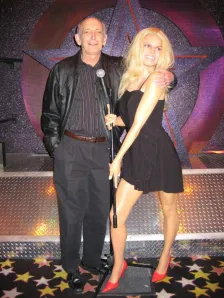Yes, it really can — and I’ve written a book about how it can do this. It’s published by J. Wiley & Sons, and is a Scientific American Alternate Book Club Selection.
I’ve published a new book — The Right Decision, by McGraw-Hill. It’s different from How Math Explains the World; it’s a practical (I believe) and entertaining (I’m pretty sure) look at decision theory. If you log on to rightdecision.wordpress.com, you’ll have a good idea of what the book is about.
Posted in Uncategorized | Leave a Comment »

Posted in Uncategorized | Leave a Comment »
How Math Explains the World was published by HarperCollins in Spring 2008, and was a featured alternate selection of the Scientific American Book Club. It is centered around three seminal 20th century results. Heisenberg’s Uncertainty Principle, from mathematical physics, shows that there are limits to what we can know about the physical Universe. Godel’s Incompleteness Theorem, from mathematical logic, shows that there are mathematical truths which logic is unable to prove. Arrow’s Impossibility Theorem, from mathematical economics, shows that it is impossible to construct an ideal method of counting votes in a democracy. The book is available at Amazon and major bookstores such as Barnes & Noble and Borders, there’s a link to it in the Blogroll sidebar.
Here’s the review from Publishers’ Weekly.
How Math Explains the World: A Guide to the Power of Numbers, from Car Repair to Modern Physics
Jim Stein. Collins Books/Harper Collins, $24.95 (288p) ISBN 0061241768
Stein, a mathematics professor at California State University, explores the application of math to problem solving in the everyday, explaining tricky concepts and developing elegant algorithms for everything from scheduling auto repair to organizing a closet. He also demonstrates the power of the solution: “We advance, both as individuals and as a species, by solving problems. As a rule of thumb, the reward for solving problems increases with the difficulty.” Stein blends math history and complex theories with jokes in a seamless manner while looking into everything from quantum mechanics to voting, while still realizing the limitations of his field—“without experiments and measurement these tools [mathetmatics] are essentially useless”—and its more whimsical possibilities: “We do not yet have the mathematical objects needed to discuss art, or beauty, or love; but that does not mean that they do not exist.” Stein’s work, mathematically rigorous but with minimal equations, will appeal to both casual and serious fans of math or physics, as well as those who take keen interest in problem solving. (May)
Posted in My Books | 2 Comments »
You must be logged in to post a comment.